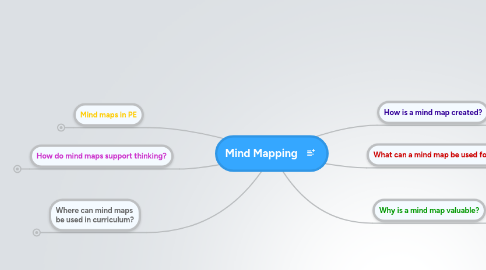Mind Mapping
by Henry Brown


1. Where can mind maps be used in curriculum?
1.1. Teacher use to organize unit plan
1.2. Student use to organize ideas before writing a paper.
1.3. Student groups to organize who is doing what in a project
1.4. Use w/ students who learn visually, showing them the steps ina process
1.5. Help students connect main ideas with sub-topics abd definitions
1.6. Students can see how sub-topics are interrelated.
2. How do mind maps support thinking?
2.1. Helps organize thoughts
2.2. Divergent Thinking
2.2.1. Radiating branches
2.3. Structured Thinking
2.3.1. central theme
2.3.1.1. 1st level
2.3.1.1.1. 2nd level....so on
2.4. Holistic Thinking
2.4.1. Big Picture
2.4.1.1. ideas are separate but connected
3. Mind maps in PE
3.1. Steps for learning to play games
3.2. Rules for games
3.3. Supplies needed for an activity
3.4. Gymnastics events
3.5. How does exercise improve heart rate & overall fitness?
3.6. Factors that effect health.
3.7. Jump rope unit
3.8. Rules for each part of the building
3.8.1. Gym
3.8.2. Classroom
3.8.3. Lunchroom
3.8.4. Playground
